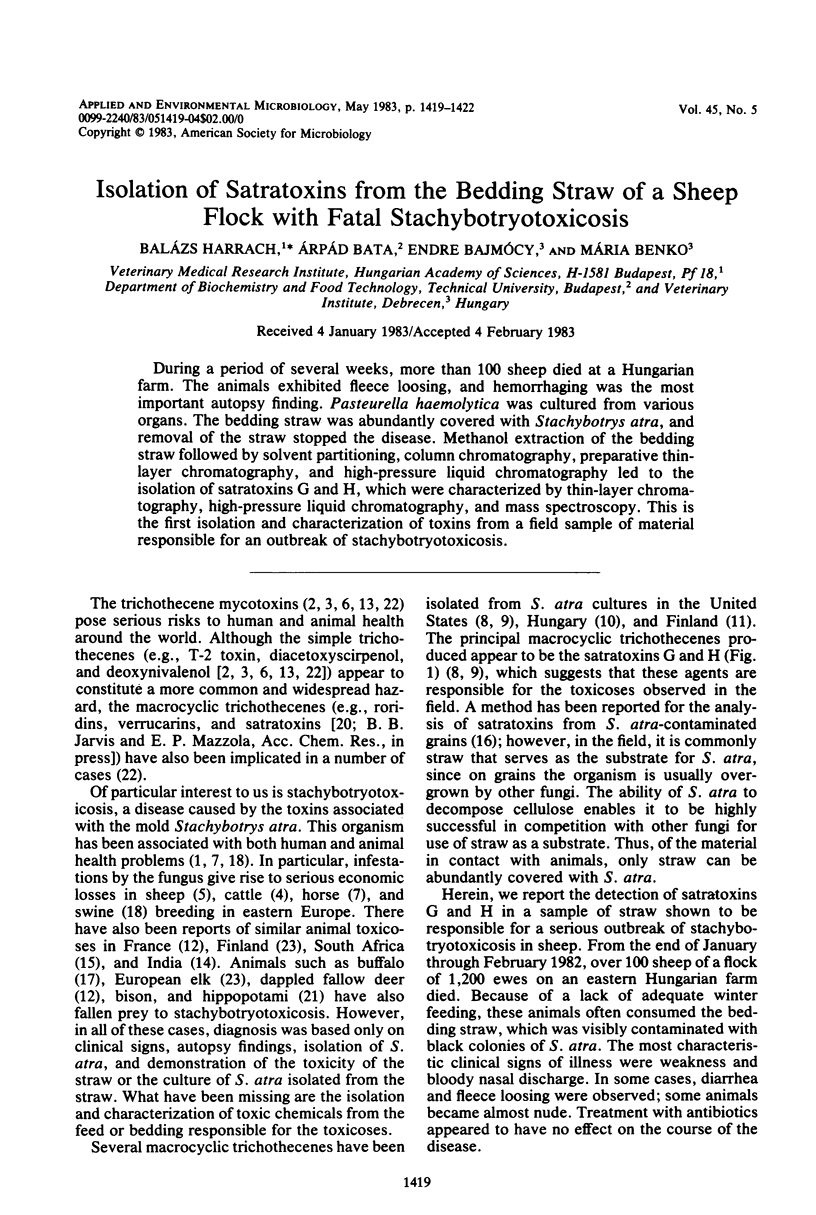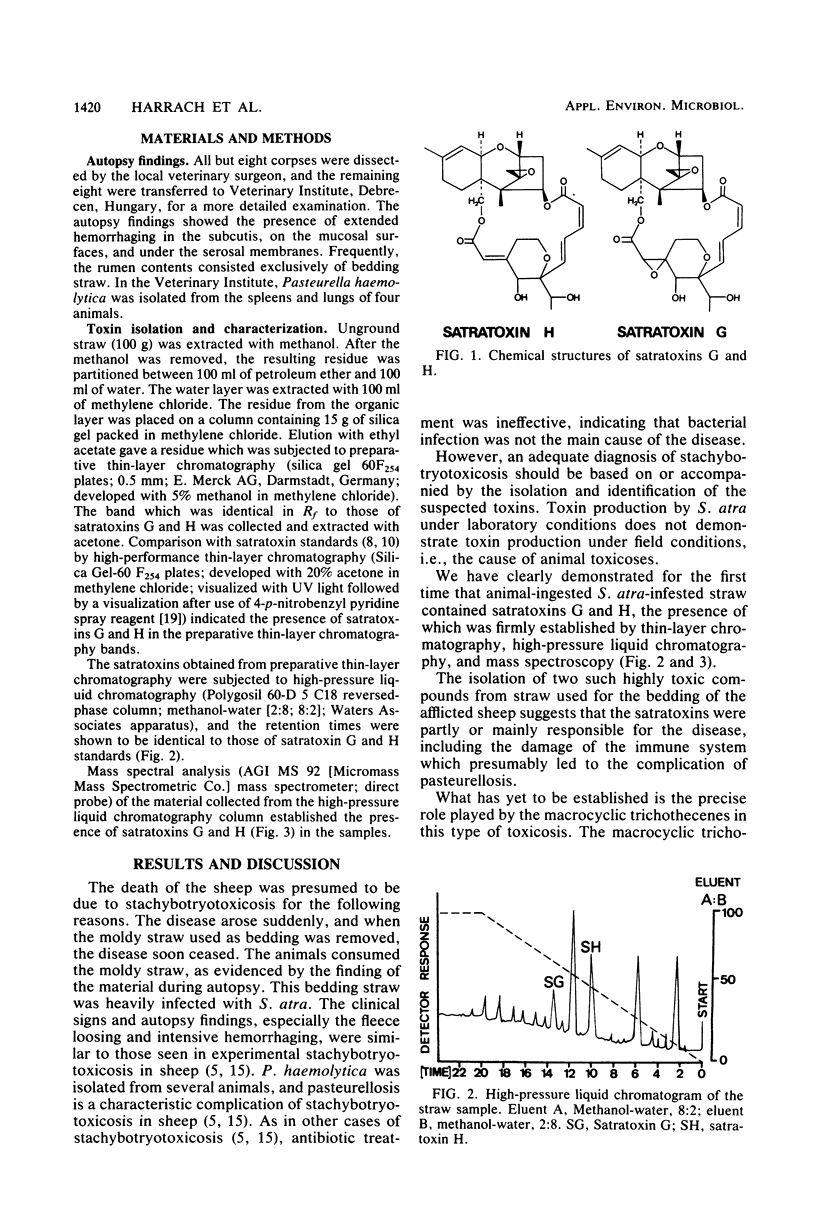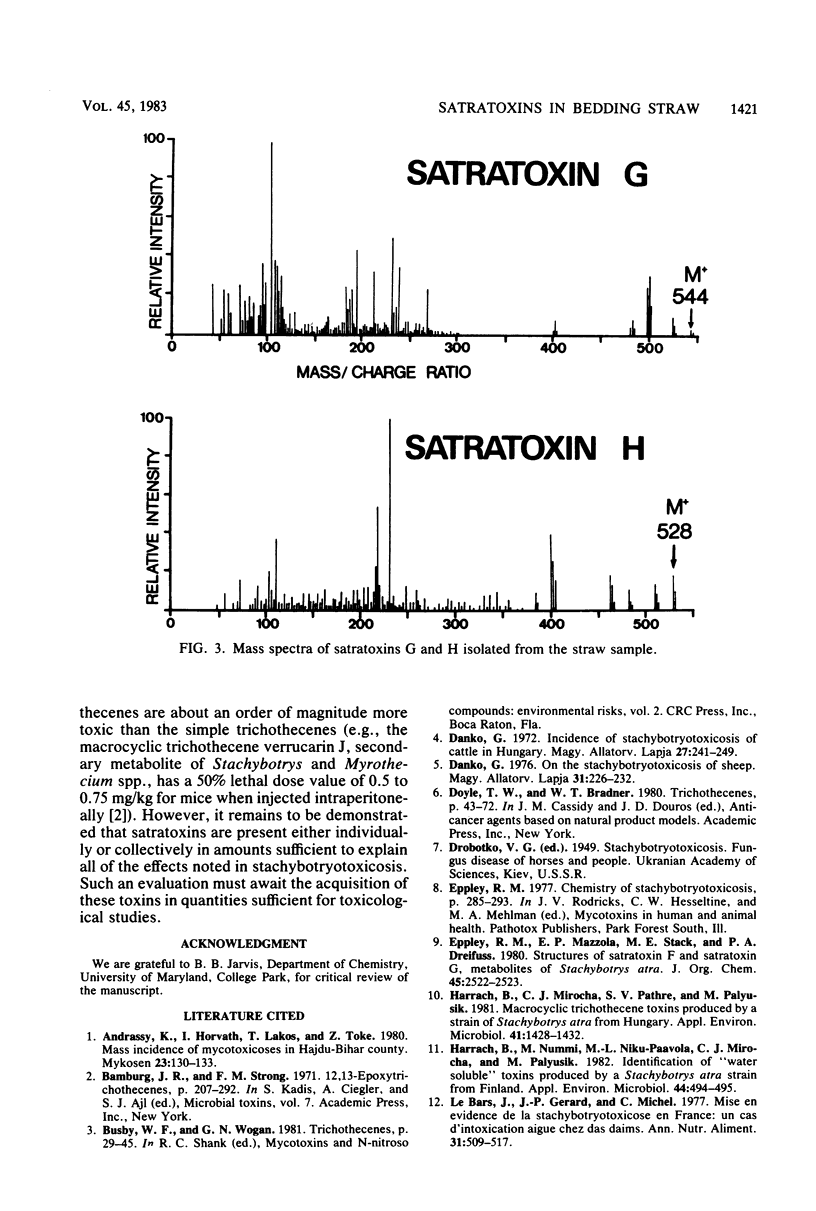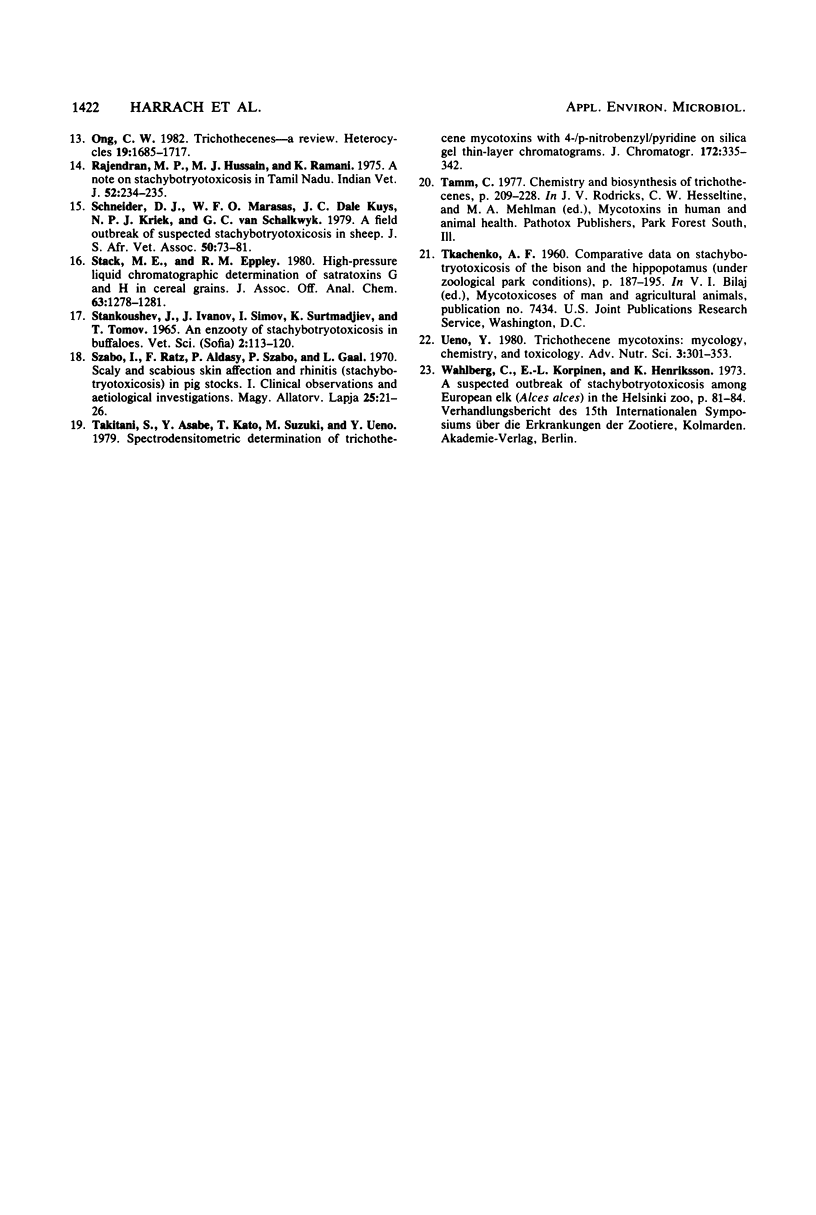Abstract
During a period of several weeks, more than 100 sheep died at a Hungarian farm. The animals exhibited fleece loosing, and hemorrhaging was the most important autopsy finding. Pasteurella haemolytica was cultured from various organs. The bedding straw was abundantly covered with Stachybotrys atra, and removal of the straw stopped the disease. Methanol extraction of the bedding straw followed by solvent partitioning, column chromatography, preparative thin-layer chromatography, and high-pressure liquid chromatography led to the isolation of satratoxins G and H, which were characterized by thin-layer chromatography, high-pressure liquid chromatography, and mass spectroscopy. This is the first isolation and characterization of toxins from a field sample of material responsible for an outbreak of stachybotryotoxicosis.
Full text
PDF



Selected References
These references are in PubMed. This may not be the complete list of references from this article.
- Andrássy K., Horváth I., Lakos T., Töke Z. Massenhaftes Auftreten von Mykotoxikosen im Komitat Hajdu-Bihar. Mykosen. 1980 Mar;23(3):130–133. [PubMed] [Google Scholar]
- Harrach B., Mirocha C. J., Pathre S. V., Palyusik M. Macrocyclic trichothecene toxins produced by a strain of Stachybotrys atra from Hungary. Appl Environ Microbiol. 1981 Jun;41(6):1428–1432. doi: 10.1128/aem.41.6.1428-1432.1981. [DOI] [PMC free article] [PubMed] [Google Scholar]
- Harrach B., Nummi M., Niku-Paavola M. L., Mirocha C. J., Palyusik M. Identification of "water-soluble" toxins produced by a Stachybotrys atra strain from Finland. Appl Environ Microbiol. 1982 Aug;44(2):494–495. doi: 10.1128/aem.44.2.494-495.1982. [DOI] [PMC free article] [PubMed] [Google Scholar]
- Le Bars J., Gérard J. P., Michel C. Mise en évidence de la stachybotryotoxicose en France: un cas d'intoxication aiguë chez des daims. Ann Nutr Aliment. 1977;31(4-6):509–517. [PubMed] [Google Scholar]
- Schneider D. J., Marasas W. F., Dale Kuys J. C., Kriek N. P., Van Schalkwyk G. C. A field outbreak of suspected stachybotryotoxicosis in sheep. J S Afr Vet Assoc. 1979 Jun;50(2):73–81. [PubMed] [Google Scholar]
- Stack M. E., Eppley R. M. High pressure liquid chromatographic determination of satratoxins G and H in cereal grains. J Assoc Off Anal Chem. 1980 Nov;63(6):1278–1281. [PubMed] [Google Scholar]
- Takitani S., Asabe Y., Kato T., Suzuki M., Ueno Y. Spectrodensitometric determination of trichothecene mycotoxins with 4-(p-nitrobenzyl)pyridine on silica gel thin-layer chromatograms. J Chromatogr. 1979 Apr 21;172:335–342. doi: 10.1016/s0021-9673(00)90970-1. [DOI] [PubMed] [Google Scholar]


